

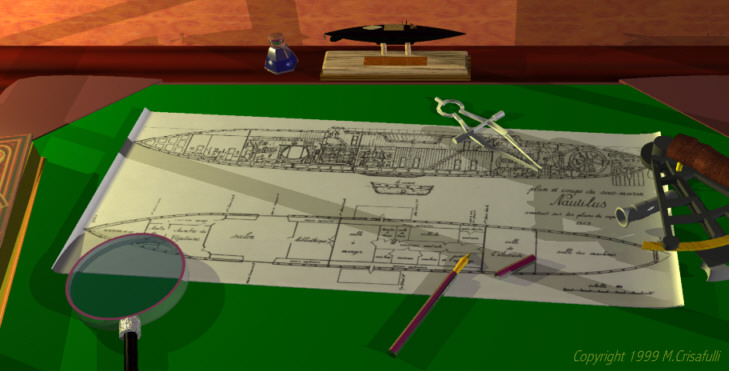
|
Some Figures Some details of the Nautilus as described by Verne are subject to interpretation and some may have been obscured in translation, but many are clearly stated. The largest portion of the information is found in the chapters titled "The Nautilus" (included in "The Man of the Seas" in incomplete translations), "All by Electricity", and "Some Figures". Additional information is scattered throughout the novel. Here's a summary of the details. T he Nautilus had a cylindrical hull 70 meters long and 8 meters wide. The double hull had tapered ends, as Nemo says to Aronnax, "like your cigar". (Nemo mentions the shape had already been adopted in London. This was the time of the "cigar ships".) The four bladed propeller was six meters in diameter with a pitch of 7.5 meters. When the Nautilus accidentally rammed the Scotia it produced a two-meter triangular hole. There was an ordinary rudder fixed to the stern and two diving planes fastened to the sides at the center of floatation. On the surface the Nautilus remained 90% underwater so its platform was 0.8 meter above the water. The platform had a structure of "medium height" with inclined sides, at each end. Forward was the wheelhouse with a 2-meter-square interior and four windows, nearly a foot thick, through which the pilot could see in all directions. Aft was the powerful light. A recession amidships held the longboat, described later as a rising enough above the deck to sit on. The platform also had a railing. Aronnax gives somewhat conflicting descriptions of the hull, first saying it is clearly metal, not looking like a living beast at all, but later describes the overlapping hull plates as resembling scales or a reptile's shell.V erne provides considerable information about the interior, especially the forward end. There was a 7.5-meter air reservoir at the very bow. Moving aft, we find Aronnax's cabin (2.5 meters long), Nemo's cabin (five meters long). Next was the drawing room/salon/museum, ten meters long, six wide, and five high. This incredible room contained an organ, an art collection of great value and very large number of marine specimens. There was also a fountain made from a shell about two meters across. Finally, the salon had two large oblong windows protected by sliding panels. Moving aft, the next room was the library (five meters long) with 12,000 volumes, followed by the captain's dining room (also five meters). Both of these rooms were exquisitely furnished. There were watertight bulkheads between the dining room and the library and salon and the captain's cabin.N ear the midpoint of the boat the description becomes less clear. There was a central staircase leading to the deck platform and to the upper passage to the wheelhouse. There was also a ladder to the longboat, and somewhere near was the airlock used for underwater access. The central section had at least one and possibly two watertight bulkheads. The size of this central section is not given. Moving aft there was a small cabin (two meters long), and the galley (three meters) located between storerooms. Nearby was a bathroom with hot and cold taps. Next was the crew's berth room (five meters). There was one more watertight bulkhead and then the engine room, described as at least 20 meters long. It had a front part devoted to generating electricity and a rear part with machinery to turn the propeller.Adding all the figures given accounts for 65 meters of the boat's total 70-meter length perhaps leaving five meters for the central section. Let's examine the text for more information |
| All by Electricity | Jules Verne was fascinated with emerging technology. His Nautilus is a prime example. His description of the boat's electric power source is filled with details but tantalizingly incomplete. Here's some speculation by others and myself about the contents of the engine room. | 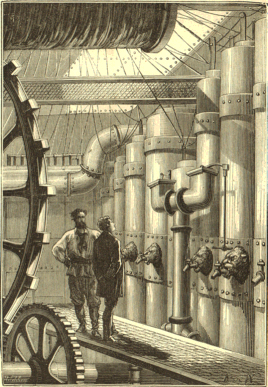 |
| "... like a needle through sailcloth!" | At the climax of the novel Aronnax describes the ram attack by the streamlined Nautilus as "... comme l'aiguille du voilier à travers la toile!" I voice my concerns about the retractable wheelhouse that contributes to the streamlining elsewhere, but my tortured justification for a stationary structure has always bothered me. Here's how others have addressed the thorny problem, and my own new solution. | 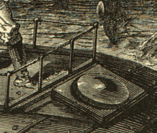 |
| The Dinghy | The dinghy, aptly described by James Laing as a submarine in its own right, provides some mini-problems for the Nautilus design. Here are some thoughts about it. | 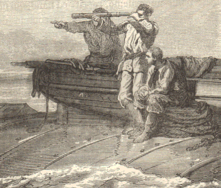 |
| The Nautilus Infrastructure | What was the shape of the Nautilus? What was the structure of its hull? The text begins to answer these questions, but leaves room for doubt and speculation. A comprehensive study by Sylvain St-Pierre prompted me to revisit them here. |
|
| The Plan | Nemo leads Professor Aronnax on a tour of the Nautilus and thereby helps us to picture its interior. Still, we can ask the question: Exactly how was it laid out? |
|
| One shouldn’t consider the Nautilus without looking once more at 20,000 Leagues under the Sea, the novel that introduced it. If you read this classic in English, it’s likely that you missed much of what Jules Verne wrote. Find out why, and how you can read the complete novel. |
Sampler of on-site Nautilus pages
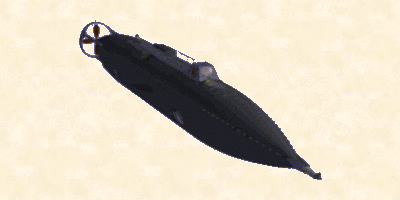
| Most recent content updates: 22 Mar 24: A design by from Benjamin Rinelli and his detailed description, the LEGO 65th anniversary Nautilus, two designs by Keith Christensen, one by Wayne Brant, and a mystery design. There are now 369 designs in the catalog. Do you have one? |
On-site Links
| Starting with the the analysis of the text above, I began my own original 3-D model of the Nautilus in 1997. Examine it in detail here. | ||
| Then, in 1999, I began a serious study of the 19th century Winans cigar boats. Intrigued by their innovative hull shape and recognizing their influence on Jules Verne, I began constructing a new Nautilus with a spindle-shaped hull. Follow the progress of this new design here. | 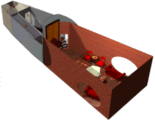
|
|
|
View Jean Gagneux's detailed 1982 Nautilus model here.
|
||
|
Jean-Pierre Bouvet sent me samples of a
very detailed design he
worked up in 1982 from Jules Verne's description. I fell in love
with these beautiful hand drawings and he has agreed to let me feature
some of them here.
|
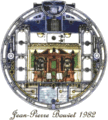
|
|
|
||
|
||
|
||
| Dave Warren has kindly offered images of his beautiful Nautilus. Enjoy them here | ||
| Many other folk have interpreted Verne's words and realized them in Nautilus designs. Examine over three hundred concepts in words, two and three dimensions here. |
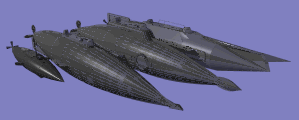
|
|
The small model on the desk in the illustration at the top of the page was once reputed to have been built by Gustav Zédé in consultation with Jules Verne. Examine it in detail here. |
|
Read about a real 19th century submarine. The long lost Confederate Hunley was raised in August 2000 and conservation and excavation of this important historical artifact are in progress. See my reconstruction and learn where you can find out more here. |
| Stuart Wier's very interesting paper, "The Design of Jules Verne's Submarine Nautilus", places the Nautilus in its 19th century technological context and discusses elements of the design and Verne's intent, similarly to the discussions on these pages. |

|
|
|
Frank Chase's Nautilus is clearly new but slightly familiar. See
renderings of his latest 3D model
with full interior on his Nautilus
web page. Frank has other goodies at Chase Studios. |
||
| Bob Martin's RC-Sub site documents his scratch-built Harper Goff Nautilus project and augments it with lots and lots of other goodies. | This may be the best site of its kind. | |

|
Bob Farrell's Design Perspective Nautilus
page describes his Nautilus design and the thoughts that drove it
in detail. (Unless you have a widescreen monitor you may miss these interesting DETAILS BY LOCATION pages: 1. The Platforms 2. Central Staircase & Entry 3. Forward Compartments & Passageways 4. Multiple Hatches 5. Wheelhouse & Access 6. Exterior Lights) |
|
| The DisneySub website is unfortunately no more, but many of the members have congregated at the new nautilussubmarine.com site. If you have any interest in the most famous Nautilus of all, see this site. There are regular updates by very, very knowledgeable folk, examining every aspect of this submarine. | ||
 |
Pat Regan's Vulcania is a great site about the Goff Nautilus and the Disney movie. Pat's own Nautilus mini-sub and full size Nemo diving suit make it unique and a must-see. | Pictures and much more related to the 1954 movie. |

|
A posting at the Jules Verne Forum sent me to Jean-Marc Deschamps' fascinating NemoTechnik web site. View photos of his Verne Nautilus model and tour his other Jules Verne pages. |

|
|
|
JC Carbonel's Model Stories site (in French) showcases models from Victorian/Sci-Fi universes. The site has an expanding page devoted to Jules Verne including many of his creations not featured here. |
|
| Didier Jaffrédo's web site, in French, provides background on his new submarine project, inspired in part by several Jules Verne concepts. You can follow this several-years-long construction in his site's blog. |

|
|

|
Pierre-Yves Garcin's Mobilis in Mobile vast on-line museum contains a number of Nautilus models and toys, among many, many other interesting items. The site is viewable in French or in English. (P-Y's site has been in "maintenance" for some time. The links are to an unfortunately slow-loading Internet Archive page.) |

|
|
|
Jacques (Captain Jack) Romero edits another Mobilis in Mobile website, "A Virtual and Independent World Encyclopedia" about Captain Nemo and his Nautilus. The encyclopedia, in French, features a very extensive bibliography, a collection of illustrations of Nemo and the Nautilus, and informative commentary. | |
|
Visit the SubCommittee, a not-for-profit organization whose focus is submarine models. |
|
|
|
1 Oct 21 |